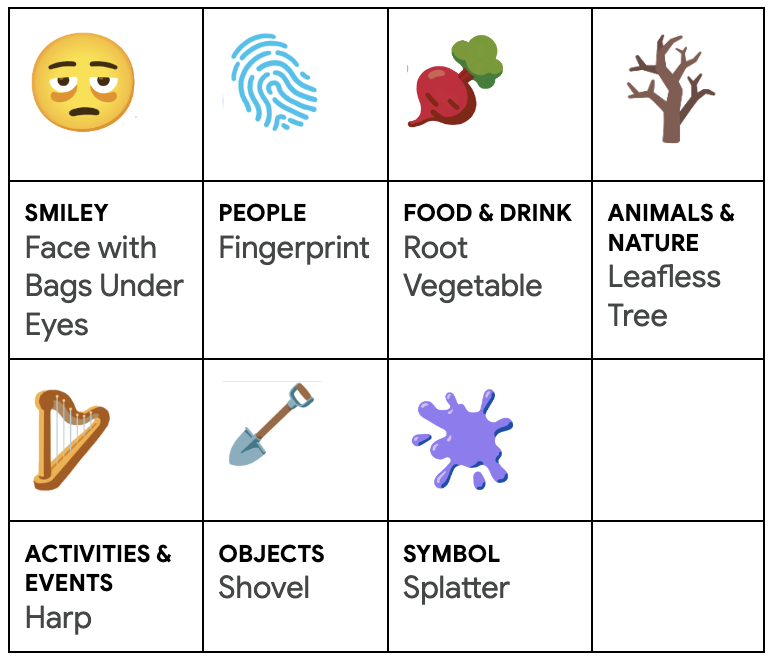By Jennifer Daniel, Chair of the ESC


The final recommendations culminated in seven emoji: one emoji per major category.
An incredibly powerful aspect of written language is that it consists of a finite number of characters that can “do it all”. And yet, as the emoji ecosystem has matured over time our keyboards have ballooned and emoji categories are about to hit — or have hit — a level of saturation. Upon reflecting on how emoji are used, the Unicode Emoji Subcommittee (ESC) has entered a new era where the primary way for emoji to move forward is not merely to add more of them to the Unicode Standard, but to consider how the ones added provide the most linguistic flexibility. As a result, the ESC approves fewer and fewer emoji proposals every year.
The few that are added this year have demonstrated their adaptability in different contexts — take for example, fingerprint. It is commonly used to represent multiple concepts. Fingerprints are a symbol of identity (unique as you), security (as a passkey), and forensics (what crime show logo is complete without a fingerprint?). While we think of fingerprints as a relatively modern phenomenon according to Forensics Digest, the earliest use of fingerprints dates back to 1000 B.C.
In fact all of this year’s emoji candidates have deep roots in history. Harps have been known since antiquity in Asia, Africa, and Europe, dating back at least as early as 3000 BCE. Today it has political, sporting, corporate, and religious symbolism 👼 Leafless trees have been around as long as ... well, trees (and poetry!) I suppose. Leafless trees literally represent droughts or winter and metaphorically indicate a state of barrenness and death.
Shovel isn’t just another noun — sure, yes, it’s a tool commonly found in your shed — in our keyboards, however, it’s also a verb. Digging yourself out of a hole, digging yourself into a hole, shoveling 💩, it does it all. But wait, there’s more. Splatter is one of those stealth emoji that when you look at you might be thinking, “really, another sex emoji?” (To be honest, show me someone who doesn’t think an emoji is a sex emoji and I’ll show you someone who lacks imagination). Splatter is a spill. Splatter is expressive. Splatter is soft — a perfect counterpoint to collision 💥 — the bouba to 💥’s kiki.
When can you get these new emoji?
A simple question that deserves a simple answer. Alas, you’re dealing with Unicode so the answer is complex. Did you know it can take up to two years to encode an emoji? It’s true. If we want the symbols we digitize to truly “just work” across the entirety of not just the Internet but all digital surfaces … it takes time. So, don’t expect to see these characters anytime soon. In fact, despite the previous batch of emoji (phoenix, lime, broken chain, etc.) getting approved last year they still haven’t landed on your device of choice yet but are well on their way to pop up in the first half of 2024.
Emoji 16.0 has a long road ahead and will appear on most devices in May-June 2025.
Support Unicode
To support Unicode’s mission to ensure everyone can communicate in their languages across all devices, please consider adopting a character, making a gift of stock, or making a donation. As Unicode, Inc. is a US-based open source, open standards, non-profit, 501(c)3 organization, your contribution may be eligible for a tax deduction. Please consult with a tax advisor for details.
![[badge]](https://www.unicode.org/announcements/ynh-pink-heart.png)



